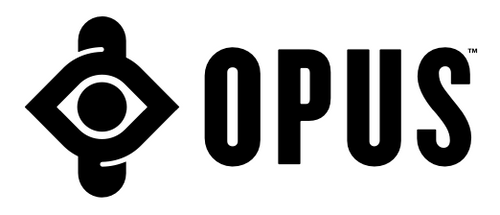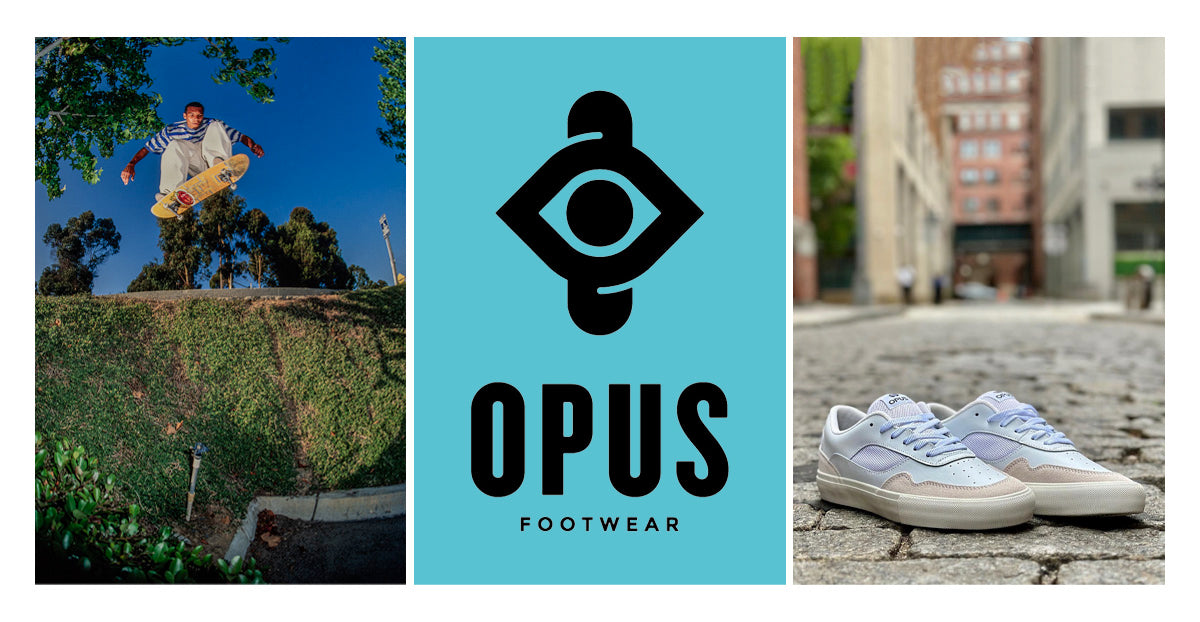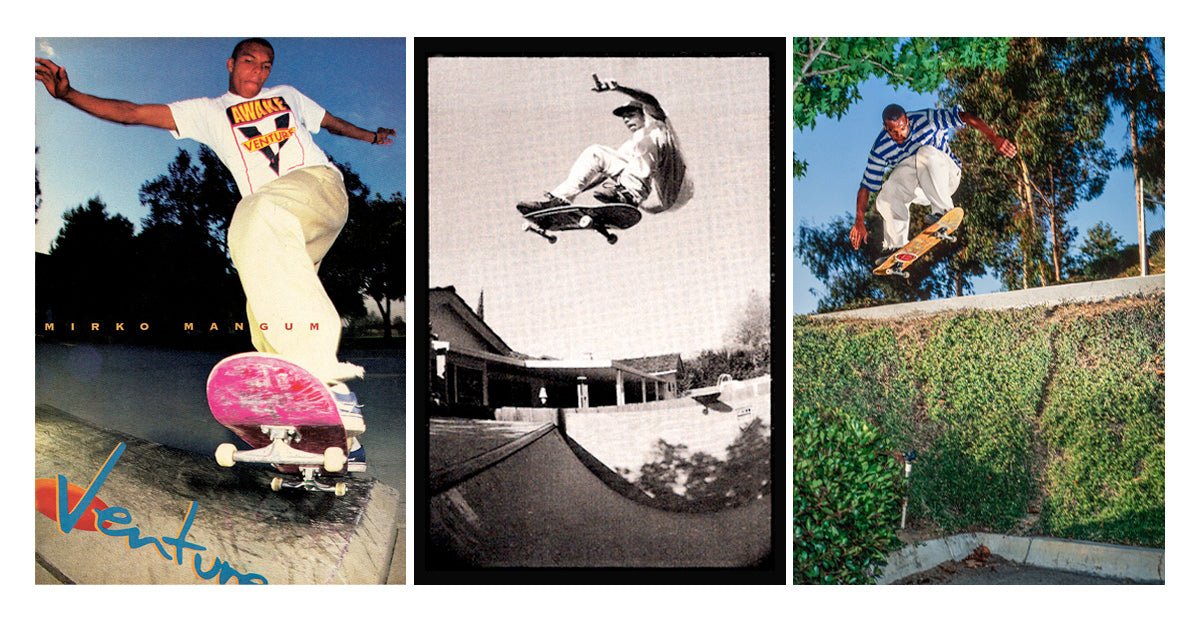Mirko Mangum Interview
Original Q&A conducted February 16, 2024 by Ceñtral Duesseldorf Skateshop in Germany.
[Q] How did you first enter the world of skateboarding?
[A] In 1979 I moved to El Cajon, CA and when I was 13 I saw a punk rocker named Robert Baker fly past me on a skateboard and ollie over a speed bump. I thought it was magic. Baker would leave his board in front of his apartment door and the neighborhood kids and I would skate it until he came out. This set the hook even deeper, and I knew I had to get a board of my own. Some friends in the neighborhood put together a Frankenstein board for me—all four wheels were different shapes and sizes; the baseplates didn't match the hanger… but I loved it.
For Christmas in 1986 I got my first real deck from Bike Shop 3, a local skate/bike shop. It was a Schmitt Stix Joe Lopez; the graphic was a hand with a reflecting globe drawn by Bryce Kanights. It was kind of a riff on an M.C. Escher drawing.
Years later, I had a cool full-circle moment when I turned pro for Planet Earth Skateboards and got to work on my shape with Schmitt Stix founder, Paul Schmitt, at his woodshop PS Stix.
[Q] Can you share some highlights of your career as a professional skateboarder for Planet Earth and Venture in the early 90s?
[A] In the 90s, pro street skateboarding wasn’t the lucrative career choice it can be today. No energy drinks, no six-figure prize purses; but contests still played a big role. I turned pro in 1992 at the Back to the City contest in San Francisco, and placed 10th. The following year I got second at Radlands in England.
It wasn’t so much about the money—the highlights of being a pro were getting to travel, and all the friends I made along the way. Getting to meet and skate with childhood heroes was always special.
[Q] After concluding your career as a professional skateboarder, you chose to dedicate yourself to business. What led to that decision, and what were the key moments in that transition?
[A] My professional on-board career ended in 1995—I retired physically, not financially. In 1993 I worked at a French skate camp for three weeks in exchange for a plane ticket to Europe. After camp I went straight into a three-week contest tour loop.
At my final pro contest, I did the splits doing a backside heel to fakie on a roll-in. My front foot stayed on the board and continued to go up, while the rest of my body went down. Both hips popped and I could barely walk. The worst part was I didn't make enough money to have health insurance, so I limped my way back to America. I think I won $500 for second place, and it cost $700 to change my flight to get home.
Beyond that, I had some smaller injuries that I never dealt with properly, and they started to stack up. Skateboarding was changing fast and the new crop of ams was a different breed. Chris Miller invited me to work at Planet Earth, and that’s how I initially “retired” into the back end of the skateboarding industry.
At the time, Planet Earth was only four or five full-time employees, so I did everything from packing shop and team orders, to picking up fabric for pants and apparel, to working on shapes with the woodshop. Around this time (late 90s), skateboarding started getting popular again and Planet Earth grew so much that we started Planet Earth snowboarding apparel, Rhythm Skateboards, and a few other brands that all operated under the same roof. My roles evolved over time. I always enjoyed doing sales—most buyers at skateshops were people I’d skated contests with or met on tour or at some sort of skate event, so it was basically talking to friends and getting to hear what was going on around the US, and in later years, the world.
[Q] You've been actively involved behind-the-scenes in major brands like Adio Footwear, Zoo York, and AlphaNumeric. What motivated you to contribute to the creation of those brands?
[A] I've been a part of some great brands. In the late 90s, Chris Miller sold Planet Earth to K2, who then funded Adio. After seven years at the Earth-Adio camp, I left to start AlphaNumeric. Then C1RCA came along. I’d met Jamie Thomas at the NSA Am finals, back when we were both coming up. I worked with him at Adio and was hyped to get to work with him on C1RCA, as well as Muska, Appleyard, and the crew. Over time my role at C1RCA expanded into VP of Sales & Marketing for all FourStar Distribution brands. I was on the road 300+ days a year. Transworld’s VideoRadio was a good insight into my life at the time, we did tours like VideoRadio with the Forum snowboard team.
After a few years of non-stop travel, Jamie told me he was going to create Black Box Distribution using Zero, so I asked If I could help. It was a great time for Zero—the Dying to Live/New Blood era.
In 2004 I moved to NYC to work at Zoo York. I returned to the West Coast in 2008, where I created two things: a retail store called UNIV, and my son, Nikko. The online portion of the store was called Robust Flavor, where we also did Whatever Distribution, distributing a few streetwear brands.
[Q] You recently launched Opus Footwear; a skateboarding brand created by skaters for skaters. Can you tell us more about it? What inspired you to establish Opus, and what mission does the brand carry within the skateboarding community?
[A] For the past 25 years I've experienced working at both smaller, family-owned skate brands, and massive brands traded on the stock market. I started Opus Footwear because I was chasing the feeling of what it was like in those early Planet Earth days—working with friends on products we were proud to have shops carry and team riders wear.
Opus is coming up on its one-year mark in April, and it's been fun to work with friends that span decades, like Kris Markovich, as well as some of the up-and-coming skaters like Swampy and Terry Kraus. I drove over 20,000 miles in 2023 and visited more than 200 core skateshops, reconnected with lots of old friends, and made some new ones along the way.
I'm proud of the shoes Dennys Han designed. Dennys, who has 20+ years in skate footwear design, teamed up with Philip Chao at RH Footwear, and the result is a quality skate shoe, with quality materials and a super comfy insole, at a fair price. We launched with a pretty tight distribution, giving skateshops something new and exciting, but still affordable.
It was a little scary at first—we didn’t really know if there would be enough demand, but the strategy has paid off, and I’m having to backfill orders every other day.
As far as a mission, it’s pretty simple: We set out to make a durable, affordable skate shoe that looks good on a board as well as off one. That’s paying off, too.
# # #
Thank you Ante and Ceñtral for sharing the origins of Opus with the skate community in Germany.


